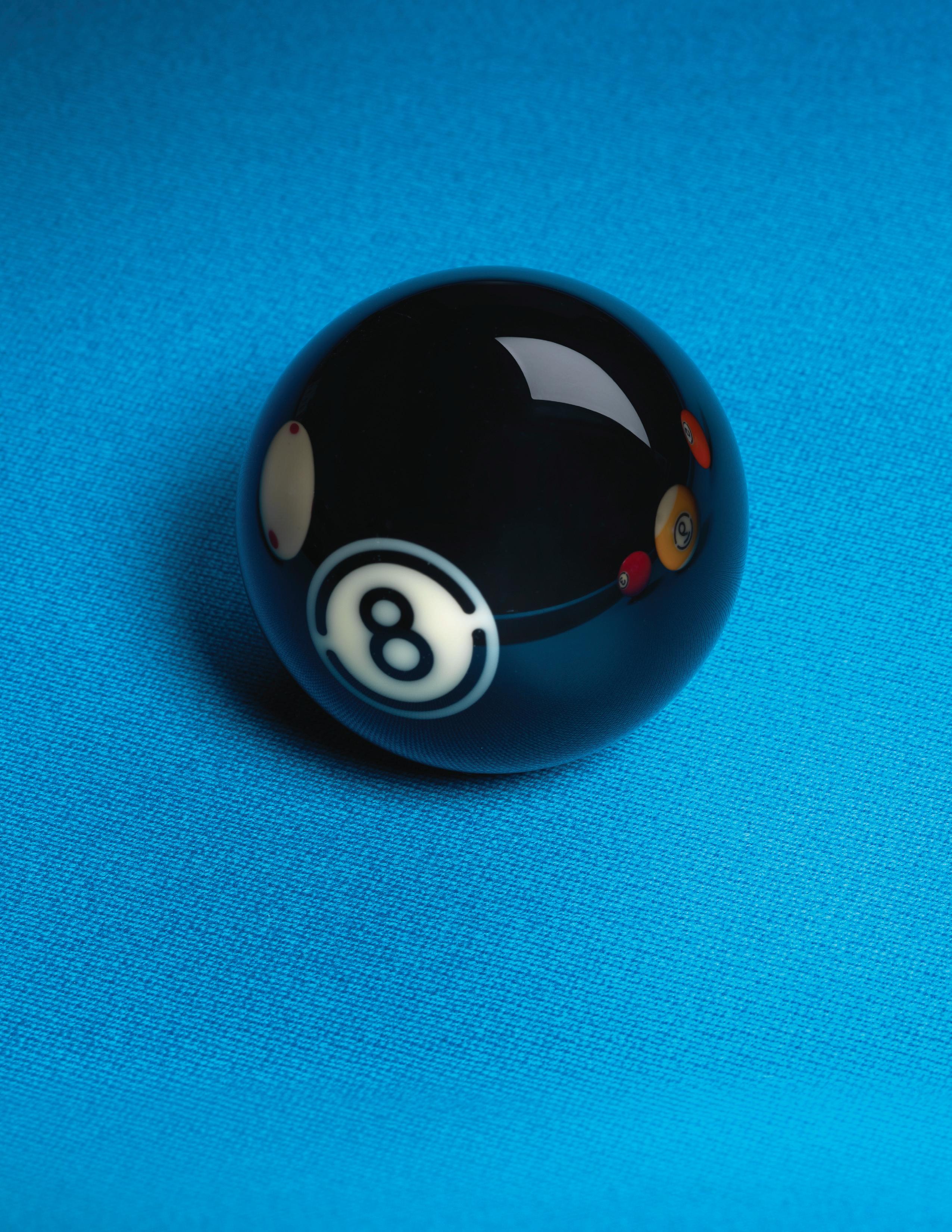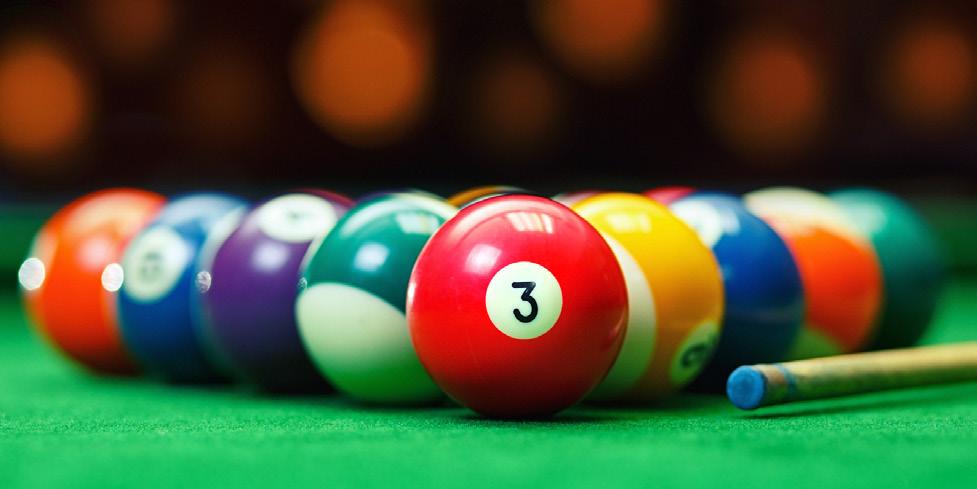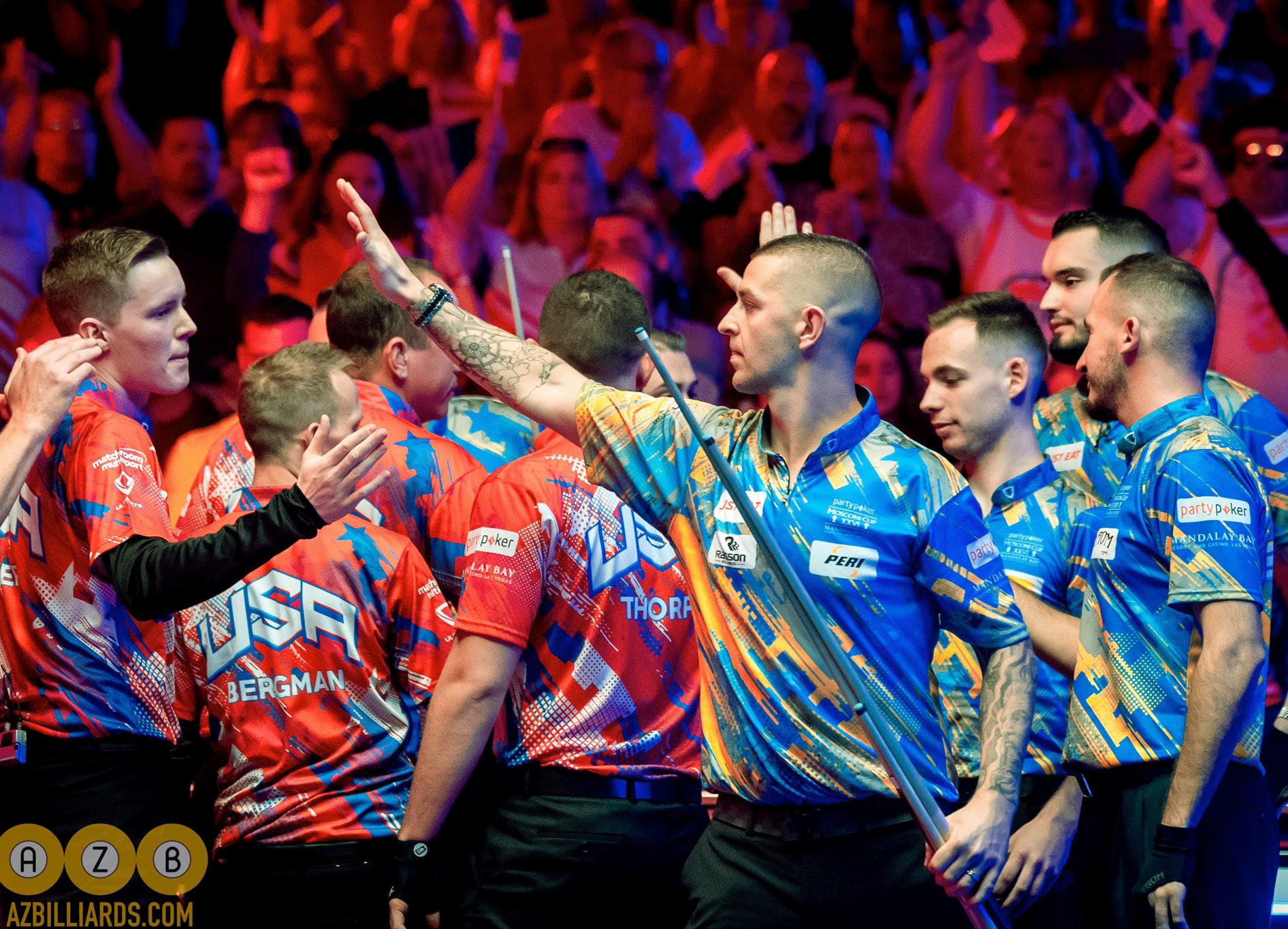
9 minute read
Team Pool Concept Gaining Steam
Team Pool Concept
Growing From its Mosconi Cup Roots to Locations Across The Country
As we noted about a week and a half ago (March 20) in our News pages, the New England Women’s Pool Alliance (NEWPA), which had launched the weekend before, would either have already conducted a second event or be close to doing so before this edition of BILLIARD BUZZ ‘hit the stands,’ so to speak.
That $200-added event, The Anchorperson Challenge, scheduled for May 23, will be hosted by Amazin’ Billiards in Malden, MA. Limited to eight teams of four, the competitors will engage, first, in a round robin series of 8-ball matches, and then, advance the best player on each team to a single-elimination tournament.
“It’s like a relay team (in a foot race), where the relay team’s best runner, the anchorperson, goes last,” explained Katie Fiorilla, who along with Stacey Tonkin and Samantha Barrett founded the Alliance.
It’s a compelling twist to what has become something of a standard format for team pool events, which is modeled on the Mosconi Cup format (a team match, followed by a series of singles and doubles matches), with each competitor earning points to a pre-determined goal. What has become apparent as the NEWPA continues to develop its program of special events, to be accompanied by an asyet-to-be-scheduled series of events and a tour, is that team pool might be the proverbial ‘way to go’ in elevating the sport’s profile in the dizzying array of professional sports available on all manner of media.
The merits of the idea are numerous. The potential concerns and obstacles are visible.
“I think pool in general has changed over the years,” said Fiorilla. “There aren’t as many pool halls and it’s not as common as it used to be that people would spend a lot of time in pool rooms, gambling. There are just so many other things to do – online poker, video games – that the popularity (of pool) has gone down.” “It takes a lot of time and practice to get to the point where you can be competitive at pool,” she added, “and a lot of people are just not interested.”
Part of the team concept as it applies to individual players is not about pool itself. It’s more about the shared experience of a team and the social interactions among members.
“It’s about just getting together for a night out and few drinks,” said Fiorilla. “The team concept is appealing, too, because it’s not just going it alone. The people on the team kind of all
Mosconi Cup teams from 2019
Team Ohio from 2020
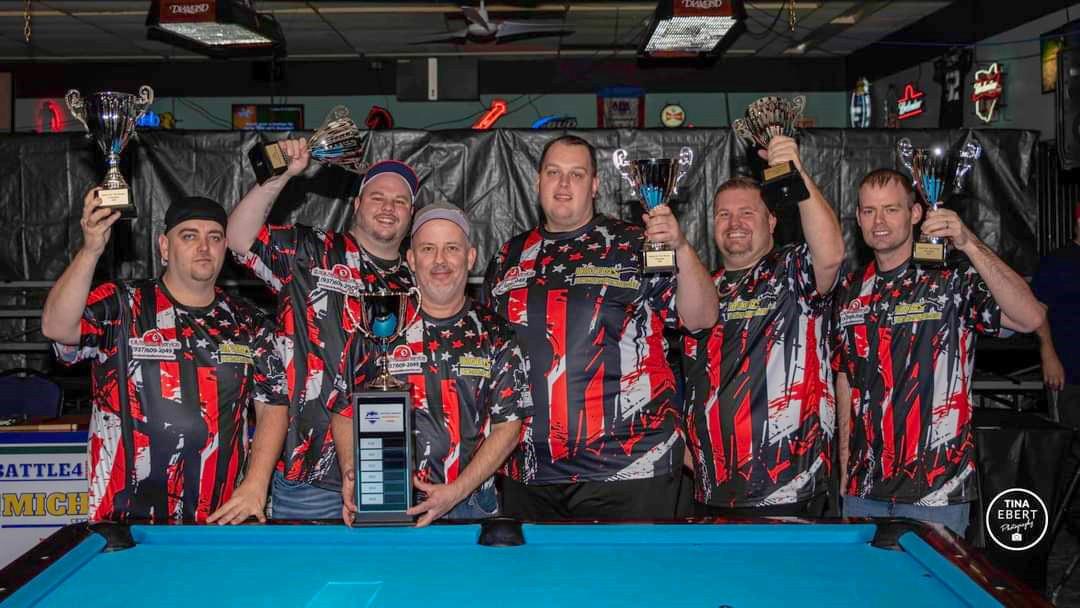
have your back. There are people to support you and the camaraderie of that is appealing.”
Fiorilla also notes that for a variety of reasons, men tend to be more competitive and have more confidence in their abilities. While recognizing that there are certainly women who are notably very competitive and would challenge the basic assertion of stronger competitiveness in men (Jeanette Lee, Alison Fisher, & Kelly Fisher, et al), she argues that the women who challenge that point are not among those who would consider playing in an Alliance round robin tournament in Bangor, ME, for example.
“These are all women who’ve chosen to make a living out of it,” she said.
As originally conceived, the Alliance is expected to have three components; The Tonkin Tour (a regularly scheduled series of typical tournament stops) to be operated by Stacey Tonkin and Specialty Tournaments (team events, fund raisers, etc.). The Specialty Tournaments and a branch of the Alliance dedicated to networking, mentorship, meetups, guest speakers, and excursions will be operated by Fiorilla and Samantha Barrett, with likely crossover activity going on with all three of those ‘branches.’
As for the upcoming team event this month (May), while the nature of competition between the participating New England states is front and center, the Alliance has worked to make it fun, as well. The event was also designed to limit the amount of time to make it happen.
“We know that it’s a turn-off for people, to be playing until two or three in the morning,” said Fiorilla, “so the event was designed for a single day.”
“The idea was to get it to be engaging,” she added, “where everyone would want to stay around as long as possible, to see if the anchorperson could do well. Marc Dionne (tour director of the New England 9-Ball Series) is donating money for operating costs like food and we also want to thank Inside Pool, the Billiard Channel and Mazin Schooni for adding money to the event and also contributing food.”
Elsewhere, established rivalries boost attendance at team events
Among the stronger arguments to convince the industry to encourage team events is the eventual establishment of rivalries. Brian “Superman” Pauley is a professionally-ranked Artistic Pool Player from Ohio, who’s also a contributor here. He and a partner, Jason Lynch (aka The Michigan Kid) have already organized team events pitting Michigan and Ohio pool teams against each other; a men’s team event, last November, and a recent women’s event, which was preceded on a Friday night by an Artistic Pool demonstration (see report on the event, elsewhere in this issue). The college football rivalry between Michigan and Ohio State dates back to a game in 1897, when the Wolverines crushed the Buckeyes 34-0 (The Buckeyes have won the last seven meetings and 14 of the last 15). The two teams have been recognized by at least one journal (Yardbarker) as the #2 college sports rivalry in the nation, behind only Army/Navy. The Buckeyes and Wolverines are also #1 and #2 in annual ticket revenue. (Buckeyes $54m/ Wolverines $44m). Pool, of course, isn’t played in a massive stadium, but the sport could easily benefit from a rivalry that sparked the same sort of loyalty and following in its fan base as those two college teams. And as far as the money goes, a properly supported live stream could potentially generate a financial return that could make the investment worthwhile.
“I think for pool players, (team events) are a pretty big deal,” said Pauley. “They get emotionally invested (because) they’re not just a person but part of a team and especially if it’s a rivalry like Michigan and Ohio State.”
“For fans, too,” he added. “People are used to rooting for teams.”
Pool fans, though, will need to be weaned from events that are totally free of charge. And it’s not as though the American sports-viewing public has an aversion to pay-per-view events; 4.4 million people paid a total of $400 million to watch Floyd Mayweather and Manny Pacquiao for 12 rounds of boxing in 2015. In fact, 12 of the 14 biggest pay-per-view events in sporting history, according to Entrepreneur magazine were boxing matches. The other two were wrestling matches.
“It has to be marketed right and people are going to have to want to watch,” said Pauley. “It’s funny, but when pool was on TV, trick shot magic had higher ratings than the tournaments.
“It has to be both entertainment and sport,” he added. “Watching ‘runout’ pool can be fairly boring.”
You’d never have known that from having watched the Mosconi Cup over the past couple of years. The crowds have been rowdy, the game play often intense and the number of people who watched it stream either live as it happened or afterwards, numbered in the hundreds of thousands, some of whom were repeat customers, who watched separate recordings of different days and individual matches at the event. Still, it’s a much higher number than most of the locally organized-and-run tournaments that take place and for the most part, are streamed every week on pool tours and special events from coast to coast.
Creating a framework around which a team pool structure could be built would take some organization and it would, eventually, need to be centralized; same format, same games, and a regular schedule. What is now underway in both New England and Ohio and in Arizona, as but two examples, would need to be duplicated, marketed, and eventually developed to the point where it is available in any number of locations, perhaps divided into regions and later. . . who knows. . into leagues?
In our own backyard (Arizona), Junior Flores has been organizing and running a regular team event that was originally a competition between the West Side and the East Side of Phoenix.
“It was just something for the fans,” said Flores, “and there was nothing like it here. Now, every year, people in Phoenix look forward to this event.”
“I think team events, as a player,” he added, “add a lot more pressure. When you’re on a team, players feel as though they’ll let their team down if they don’t do well. Multiply that by 10, one team versus another, with fans coming to support you. It benefits the bar, bringing people in, some of whom aren’t even pool players.”
Flores has run five team events in the West Side/East Side rivalry (formerly the North/South rivalry) and to date, four against teams coming from Nevada. The West Side leads the East Side 3-2. Arizona leads Nevada 3-1. These events have hosted up to 300 spectators.
“For the Phoenix events,” said Flores, “we have to rent bleachers.”
“We’ve received inquiries from Northern California and there’s been talk about Oklahoma, too,” he added. “We’ve heard that Colorado has their ‘state wars,’ too.”
Among many things that would need to be worked out to connect just the three geographically disparate areas mentioned here, would be whether such events should be handicapped. If organizers and promoters of these events are looking to develop the concept into something that might stretch from coast to coast, the way Larry Chiborak wished to do with Bonus Ball, they might have to consider making the team events an Open competition (no handicaps), which is something that many local promoters might be loathe to do. As with the three cases noted here, though, local participation is what fueled the creation of the team events and trying to elevate the level of play as the number of events grew would have a way of denying the very people who helped the idea take flight, the right to fly themselves.
At present, the Michigan/Ohio series of team events are played without handicaps. The format for those events and the Arizona-based events are modeled on the Mosconi Cup events, while the New England Women’s Pool Alliance has carved out a combination round-robin/single elimination format they refer to as the Anchorperson Challenge. Multiply those differences by 10 and try to imagine players, promoters and event organizers trying to meet and decide on one way to do it all.
We are, of course, way ahead of ourselves here, but there are little pockets of these ‘team pool’ events that are cropping up all over the landscape. They’re distinctly different than pool teams of their amateur pool league counterparts (APA, BCAPL, VNEA, NAPL and others), because they foster the creation of fan-generating rivalries that those fans might want to follow and even (gasp!) pay money to see.
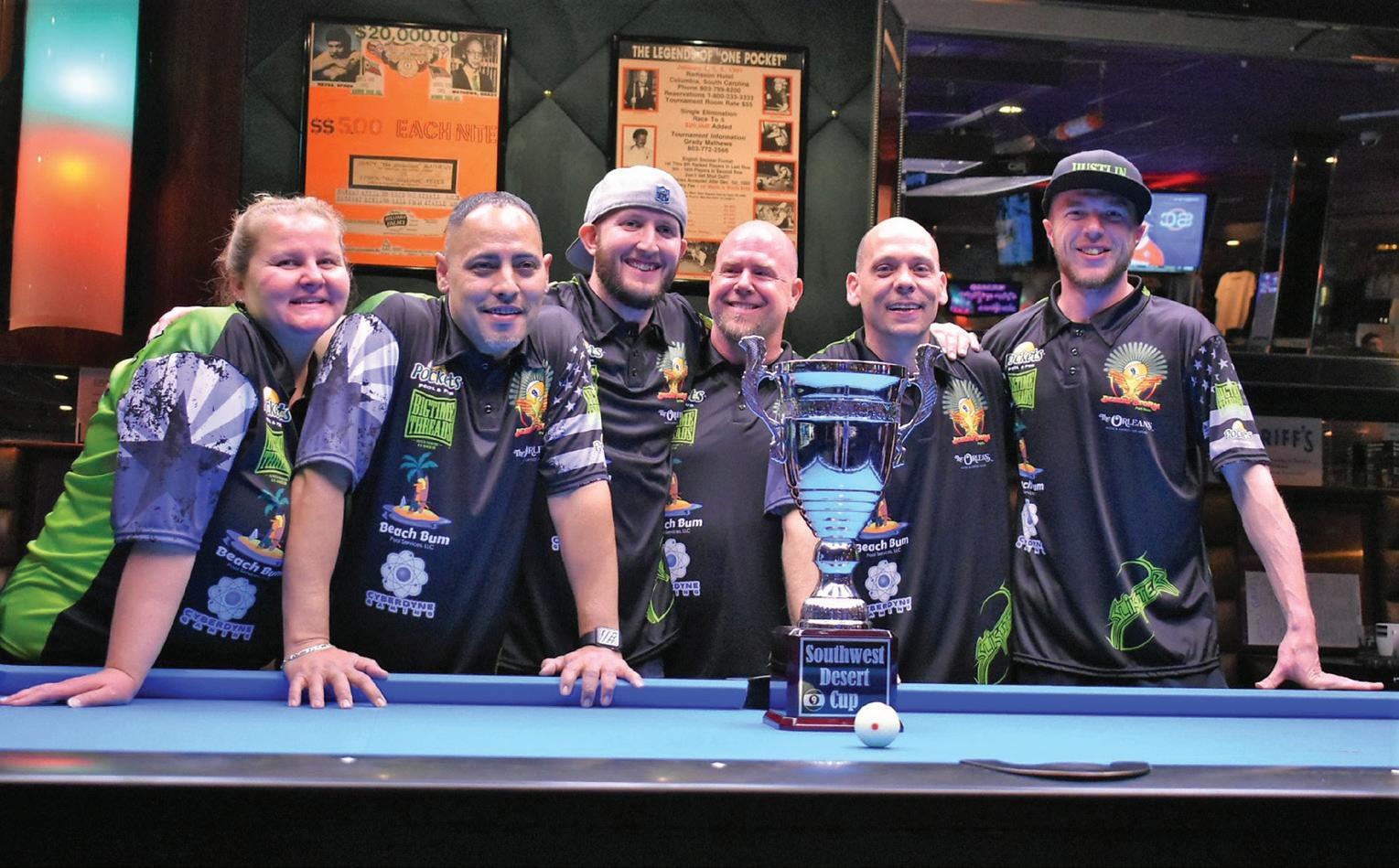
Team Arizona from 2019

